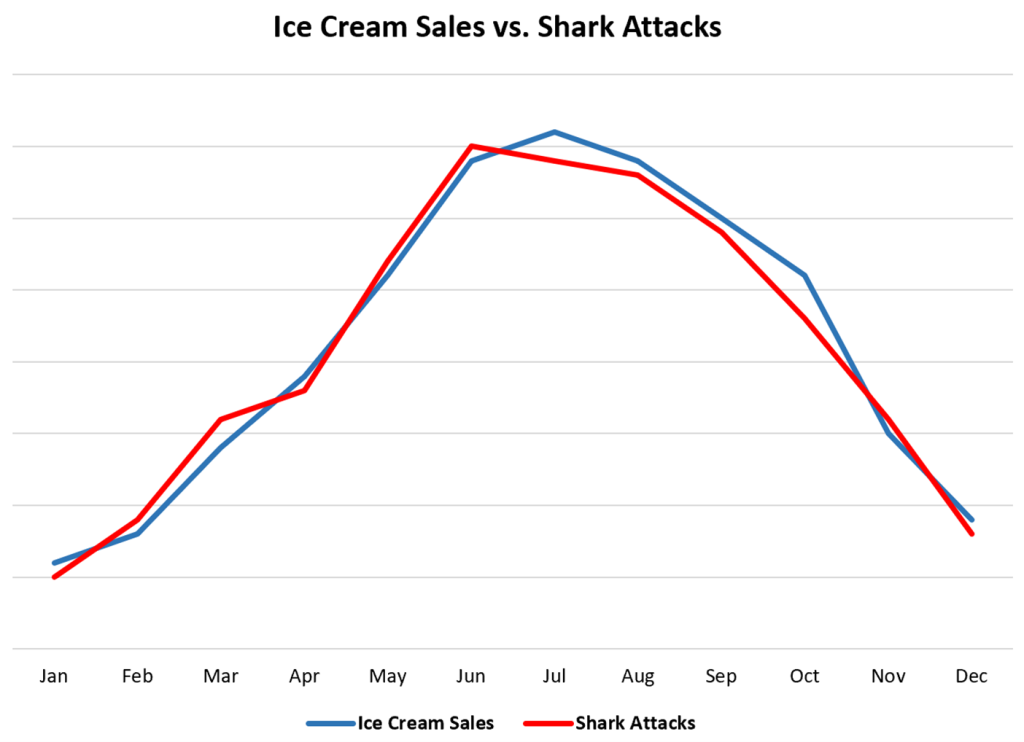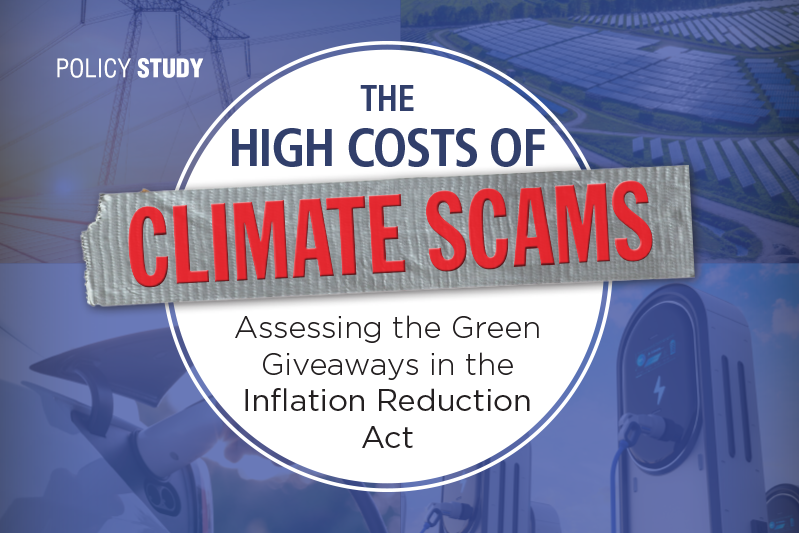A recent article published by The Corporation for Public Broadcasting (PBS) claims that “floods and droughts are worsened by climate change.” Various lines of evidence and hard data falsify this claim.
The article, originally by Isabella O’Malley, of the Associated Press (AP) was carried on the PBS Newshour website with the title “Scientists confirm global floods and droughts worsened by climate change”
The article leads with this alarming claim:
The intensity of extreme drought and rainfall has “sharply” increased over the past 20 years, according to a study published Monday in the journal Nature Water. These aren’t merely tough weather events, they are leading to extremes such as crop failure, infrastructure damage and even humanitarian crises.
The big picture on water comes from data from a pair of satellites known as GRACE, or Gravity Recovery and Climate Experiment, that were used to measure changes in Earth’s water storage — the sum of all the water on and in the land, including groundwater, surface water, ice, and snow.
For good measure, O’Malley adds this unsupportable claim:
The researchers say the data confirms that both the frequency and intensity of rainfall and droughts are increasing due to burning fossil fuels and other human activity that releases greenhouse gases.
“I was surprised to see how well correlated the global intensity was with global mean temperatures,” said Matthew Rodell, study author and deputy director of Earth sciences for hydrosphere, biosphere, and geophysics at NASA Goddard Space Flight Center.
As any professional scientist will tell you, correlation is not causation. Wikipedia says, “The phrase “correlation does not imply causation” refers to the inability to legitimately deduce a cause-and-effect relationship between two events or variables solely on the basis of an observed association or correlation between them.”
For example, data in this graph in Figure 1 correlates nearly perfectly, but anyone can tell you that the two data items plotted, Ice Cream Sales and Shark Attacks, have no cause-and-effect relationship.
Figure 1. A highly correlated graph with no relationship between the two datasets. Source: Statology.org
There are other problems with the article, most notably the time period of data involved – 20 years – which by definition does not meet the 30-year period required to determine a climate trend.
Worse than that, the article reports, “Researchers looked at 1,056 events from 2002-2021 using a novel algorithm that identifies where the land is much wetter or drier than normal.” In other words, in addition to the lack of 30-years of data, this study used a “novel algorithm” that has not been applied to other areas or the same areas in the past for a proper comparison of past and present climate trends and any changes over time.
Also, this data is from a satellite designed to measure variations in Earth’s gravity, not climate change. Therefore, the data produced isn’t a direct measurement, but a proxy for what has happened with droughts and floods assumptions about how gravity changes. These three glaring inconsistencies with regular climate science procedures fail to instill trust in the methods used in, or the conclusions come to, in this particular study.
Real-world data, actually measured on Earth over multiple decades, contradicts the claims made in the study and the AP/PBS story reporting on it. For example, data on drought in the United States, presented in Climate at a Glance: Drought, show no increasing drought trend whatsoever since January 1895. The U.N. Intergovernmental Panel on Climate Change (IPCC) reports with “high confidence” that precipitation has increased over mid-latitude land areas of the Northern Hemisphere (including the United States) during the past 70 years, while IPCC has “low confidence” about any negative trends globally.
Likewise, when it comes to flooding, The IPCC reports it has “low confidence” climate change is impacting flooding. The U.N. IPCC admits having “low confidence” in even the “sign” of any changes—in other words, it is just as likely that climate change is making floods less frequent and less severe.
The latter point highlights another grievous error made in the study hyped by PBS – the researchers involved conflated precipitation and flooding.
The IPCC report indicates climate change is not a factor in flooding. As Roger Pielke, Jr., said in his summary and analysis of the report, (bold, the author’s)
Heavy precipitation: “the frequency and intensity of heavy precipitation have likely increased at the global scale over a majority of land regions with good observational coverage … [yet] “heavier rainfall does not always lead to greater flooding.”
To make claims about trends in flooding, one should look at trends in flooding and not precipitation. The conflation of the two is a common error.
Also of note, what flooding has occurred, has been impact-minimized as costs of flooding have decreased over the last century, as seen in Figure 2.
Figure 2. Cost of U.S. Flood Events since 1903 through 2018. Dotted red line indicates the trend.
While the rest of the world may not have effective mitigation measures for flooding due to lack of resources, the bottom line is that the IPCC has found no global climate induced trends in either droughts or flooding. Unfortunately, the AP writer O’Malley completely ignores this in favor of the findings of a single study that contains, at a minimum, three major flaws in the way it gathered, analyzed, and reported its results.
This flawed reporting seems to be a sad trend. Just last year, an AP article linked climate change to severe flooding in South Africa. The widely carried AP story, “Climate change a major factor in fatal South Africa floods,” was typical of the media’s coverage of flawed and unverified research. Just as with the recent PBS story, a modicum of basic research proved the earlier claims false. In, Wrong, CNN, AP, NYT, etc., Climate Change Did Not Cause South Africa’s Tragic Floods, my colleague Sterling Burnett showed there was no evidence linking South African flooding to climate change.
Why do mainstream media outlets promote alarming, novel results from unverified studies, while ignoring contrary existing evidence? It could be simple incompetence, or possibly because disasters and crises sell better than “all is well.” It could also be because they are being directly paid to write articles hawking the narrative that humans are causing a climate crisis. The AP, received a grant of $8 million over three years, to hire twenty new “climate journalists,” who, like O’Malley, seemingly ignore the truth when telling the truth fails to further their funded mission. Coincidence?

























It is not only the media, but the Secretary of the Treasury, too.
https://www.reuters.com/world/us/yellen-warns-climate-change-could-trigger-asset-value-losses-harming-us-economy-2023-03-07/
“Yellen will tell a new advisory board of academics, private sector experts and non-profits there has been a five-fold increase in the annual number of billion-dollar disasters over the past five years, compared to the 1980s, even after taking into account inflation.”
Hi Anthony … Australia has drawn attention as an example of climate change causing increased and “unprecedented” flooding, largely due to the deadly floods of early 2022 in northern NSW and southern Queensland.
There have been several other major floods since then during the third La Nina year, largely thanks to heavy rainfall on saturated soils. It’s become accepted wisdom that these will worsen in coming years, with the Climate Council warning that one in 25 Australian homes will be uninsurable this decade as a result.
However, analysis of 90th, 95th and 99th percentile daily rainfall frequency and mm volumes since the late 1800s at locations nominated by the Climate Council as vulnerable (i.e. rainfall with the potential to cause riverine rather than local flash flooding) shows such events have been in decline since the 1970s.
The analysis is at http://www.waclimate.net/rainfall-insurance/index.html
The page frames these findings within the context that dramatic vision of last year’s floods were a contributor to Australia voting in a climate change parliament at federal elections shortly thereafter.
Putting aside that inference, the declining extreme (or flooding) daily rainfall data remains unknown to the Australian public who are instead believing media, political and institutional claims that flooding rainfall has never been so bad and is getting worse, as well as resultant soaring insurance premiums based on a fallacy.